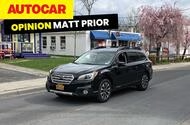Woodstock, New York, is more than just a quaint town nestled near the Catskill Mountains; it’s a vibrant hub of culture and community, famously known for the iconic music festival that took place in 1969. While the festival itself was held 60 miles away, the spirit of peace, love, and music still resonates throughout the town today. You can feel it in the air, from the drum circles on the village green to the vegan cafes and herbal remedy shops lining the streets. But there’s something else that stands out in Woodstock: the abundance of Subarus.
What’s the Deal with All the Subarus?
If you’ve ever visited Woodstock, you might have noticed a peculiar trend: Subarus seem to be everywhere. In one parking lot, nearly 20% of the cars were Subarus—a striking sight, to say the least. This isn’t just a coincidence. Subaru’s connection to this liberal enclave stems from a clever marketing strategy that dates back to the 1990s.
When Subaru of America conducted a survey to understand its customer base, they discovered an unexpected demographic: lesbians. This group, characterized by decent incomes and a penchant for outdoor activities, was drawn to the brand’s rugged, practical vehicles. Recognizing this, Subaru decided to embrace its newfound audience with targeted advertising that spoke directly to them.
How Did Subaru Win Over a Niche Market?
Subaru’s marketing campaigns were groundbreaking for their time. They featured ads that resonated with the LGBTQ+ community, using clever wordplay and imagery that subtly acknowledged the audience’s identity. Phrases like “Get out, and stay out” and “It’s not a choice, it’s the way we’re built” cleverly intertwined the brand’s message with a nod to the community’s values.
While some conservative consumers reacted negatively, threatening boycotts, Subaru’s research indicated that these complaints mostly came from individuals who had never purchased a Subaru. The brand’s reputation among liberal consumers only strengthened, leading to a loyal customer base that continues to thrive today.
What Do the Numbers Say?
Fast forward to 2024, and the impact of Subaru’s marketing strategy is evident. According to YouGov’s bipartisan brand rankings, 28% of liberal Americans and 33% of gay women would consider purchasing a Subaru, compared to just 16% of conservatives. This 12-point gap is the largest among car manufacturers, with Honda and Volkswagen trailing behind.
In contrast, brands like Ford and Chevrolet, which are favored by conservatives, show a much smaller divide, indicating that Subaru has successfully carved out a unique niche in the automotive market.
Why Do Subarus Fit the Lifestyle in Woodstock?
Beyond the marketing, there are practical reasons why Subarus are a popular choice in the northeastern U.S. With their all-wheel drive capabilities, they handle the snowy winters with ease. In a region where winter weather can be harsh, having a reliable vehicle is essential. But in Woodstock, it’s not just about practicality; it’s about identity.
Driving a Subaru in this town isn’t merely a choice of transportation; it’s a statement of values. It aligns with the community’s ethos of environmental consciousness and outdoor adventure. While other small American towns may echo with the roar of Detroit V8s, Woodstock’s soundtrack is the gentle hum of Subaru engines, perfectly in tune with its laid-back, progressive vibe.
The Takeaway
Subaru’s success in Woodstock is a testament to the power of understanding your audience and embracing diversity. By recognizing and catering to a niche market, Subaru not only built a loyal customer base but also created a brand identity that resonates with values of inclusivity and adventure. The big takeaway? Marketing isn’t just about selling a product; it’s about connecting with people on a deeper level. Whether you’re in a small town or a bustling city, understanding your audience can lead to remarkable success. So, what’s one change you can make in your approach this week? You might just see a difference by the end of the month.

